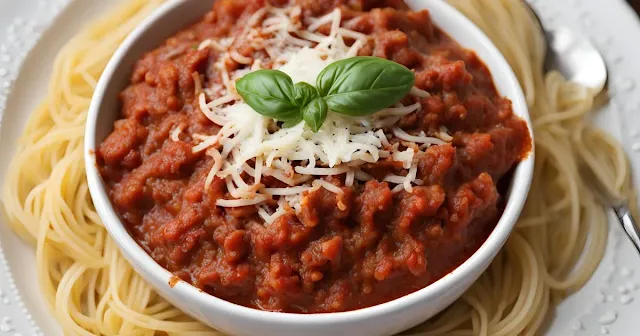There's something profoundly satisfying about simmering a pot of spaghetti sauce on the stove. The aromas of garlic, tomatoes, and herbs fill the kitchen, promising a delicious meal ahead. Making spaghetti sauce from scratch allows you to control the ingredients, adjusting flavors to suit your palate perfectly. This guide is designed for home cooks and food enthusiasts eager to explore the joy of creating their own spaghetti sauce.
Ingredients:
To start, you'll need fresh, quality ingredients:
- Fresh Tomatoes: 5 lbs, ripe and juicy, are the heart of your sauce.
- Garlic: 4 cloves, minced, to add a punch of flavor.
- Onions: 2 medium, finely chopped, for sweetness and depth.
- Herbs: Fresh basil and oregano, ¼ cup each, chopped, bring the sauce to life.
- Olive Oil: 2 tablespoons, for sautéing.
- Salt & Pepper: To taste, for seasoning.
- Optional: Red pepper flakes for a bit of heat, sugar to balance acidity.
Prep Work:
- Prepare the Tomatoes: Start by blanching your tomatoes to remove the skins easily. Cut a small "X" on the bottom of each tomato and plunge them into boiling water for about a minute. Transfer them immediately into ice water. Once cooled, the skins should peel off effortlessly. Then, cut the tomatoes in half, and gently squeeze out the seeds.
- Chop Your Aromatics: Finely chop the garlic and onions. Select fresh herbs, rinse, and chop them roughly to release their flavors.
Cooking Instructions:
- Sauté the Garlic and Onions: In a large pot, heat the olive oil over medium heat. Add the minced garlic and chopped onions, sautéing until they are soft and translucent, about 5 minutes.
- Add the Tomatoes: Incorporate your prepared tomatoes into the pot. Using a wooden spoon, break them down into smaller pieces as they cook.
- Simmer with Herbs: Add the chopped basil and oregano. If you like a bit of heat, this is the time to add red pepper flakes. Lower the heat, and allow the sauce to simmer gently, uncovered, for about 2 hours. Stir occasionally, watching as it thickens into a rich, fragrant sauce.
- Season to Taste: After the sauce has reduced and thickened, season with salt and pepper. If your sauce tastes too acidic, a pinch of sugar can help balance the flavors.
Seasoning Tips:
Taste your sauce periodically as it simmers. The longer it cooks, the more concentrated the flavors will become. Adjust your seasoning gradually, adding more herbs, salt, or spices as needed.
Serving Suggestions:
While freshly cooked spaghetti is the classic choice, this homemade sauce pairs wonderfully with any pasta. Use it as a base for lasagnas, and meatballs, or even as a dipping sauce for garlic bread.
Conclusion:
Making spaghetti sauce from scratch is a labor of love, but the result is undeniably worth it. Each batch reflects the care and creativity of its maker, and there's no limit to the variations you can explore. Whether you stick to the classic recipe or add your personal twist, we hope you find joy in the process and pride in the delicious outcome. Share your experiences and recipe variations in the comments—we'd love to hear how your homemade spaghetti sauce turns out!


Post a Comment